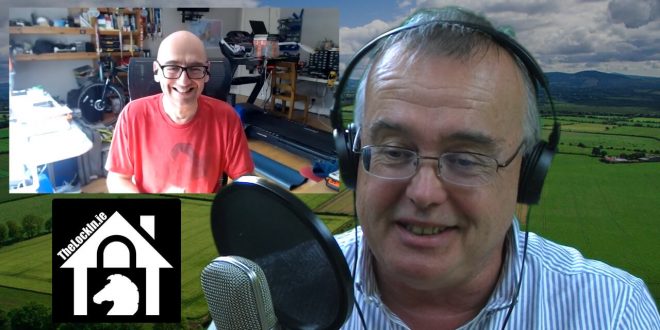On this week’s show we’re talking to Conor O’Neill, Chief Product Officer at Nearform, the company that built Ireland’s open-source Covid Tracker App for the Health Service Executive and went on to develop and support versions of the app for health authorities around the world.
Click on the player below to play the podcast audio (download: 24:13; 14MB; MP3), or scroll down to watch the video.
Founded in 2011, Nearform has been a distributed remote-working company from the start. Having built a solid foundation in open source and rapid mobile development, and as major contributors to the development of the node.js framework for server-side Javascript, Nearform found itself almost uniquely well positioned to answer the government’s call for a developer for the Covid Tracker.
“When the HSE work came along, it was like everything came together. Remote team? Tick. Experts at delivering fast apps? Tick again. Has done a bunch of stuff in Bluetooth? Tick again. Experts in open-source? Oh – that’ll do as well!”
Of course the mobile app is just one plank in the platform of measures our communities need to employ to protect against transmission of Cornavirus. No single element is sufficient by itself but, combined with hand-washing, social distancing and general common sense, mobile device exposure notification is another tool in the box. But, while it’s reassuring not to have received a notification, I wondered, how do I know that it’s actually working?
That’s how it works, he says. While the Irish app does a number of things, including share the latest national statistics with its users, “really, that fundamental functionality should just be in the background and it shouldn’t be something you have to be concerned about”.
“Both Apple and Google, in recent times, have added notifications – not exposure notifications, but sort of a little informative notification, more or less to say: we’re still working away in the background; rest assured … and that’s the reality of the app. Once it’s installed; the service is running; it just does its thing and it’s only when you have that situation that you may have got an exposure notification that you should engage with it.”
We’ve talked before on this show about how openness and transparency have been key features of the Irish app from the start. That approach was essential, says Conor, because its success relies on public trust.
“We’ve been talking a lot … talking to to other jurisdictions who were thinking about doing apps, and really, how the HSE and the Department of Health and everyone involved in that, the government; how they went about it in terms of building trust. Everyone should just look at that and say: that’s the absolute exemplar for how you should launch an app like this. And it’s not just the open source piece. It is that transparency, data protection impact assessment, you know, all of that. Everything up on Github, so that if you’re in any way concerned you can actually inform yourself that, actually, this is something I can trust – and I think that word ‘trust’ is so central to all of this”
And it wasn’t just Nearform and the HSE working in isolation. Other stakeholders included the Department of Health, the ESRI, the Gardaí and the Defence Forces who helped to test it, “building layer upon layer of trust ahead of time”.
“I think that’s why, to date, it’s still, I believe, the most successful initial launch of an exposure notification app, globally. The one in Finland has been doing incredibly well, as well. As of about two weeks ago they have about two million people signed up for theirs – and they took a similar approach in terms of that kind of trust-based approach”.
The Irish project has been a springboard for other countries.
“The app was open-source from the start, and that was really for Irish people, for us to have a sense of confidence in our own state’s app, that it was safe and that it was trustworthy. But then when we went to look at the US, you had a lot of activity happening over there and The Linux Foundation … they set up this public health group … focused on these apps, and the HSE actually donated the source code of the app that we had built to The Linux Foundation: that became a thing called COVID Green. That’s one of two apps globally that The Linux foundation basically supports with our help, and then US states have started working on apps using COVID Green and working with us”.
At the time we recorded this interview, Delaware and Pennsylvania had launched apps based on the Irish code. Since then it has been deployed in New York and New Jersey. In addition to US states, Northern Ireland, Scotland, Gibraltar and Jersey have also launched apps based on COVID Green.
We also talked about remote working and the fundamental shift in work practices caused by the pandemic. And the video version of this podcast also includes a timelapse video and virtual tour of the newly refurbished Blacknight office in Carlow, to which some of our staff are in the process of returning on a phased basis.
Subscribe to The Lock-In Podcast using GoLoud, Apple Podcasts, Spotify, Google Podcasts or RSS, or watch our videos on YouTube.
